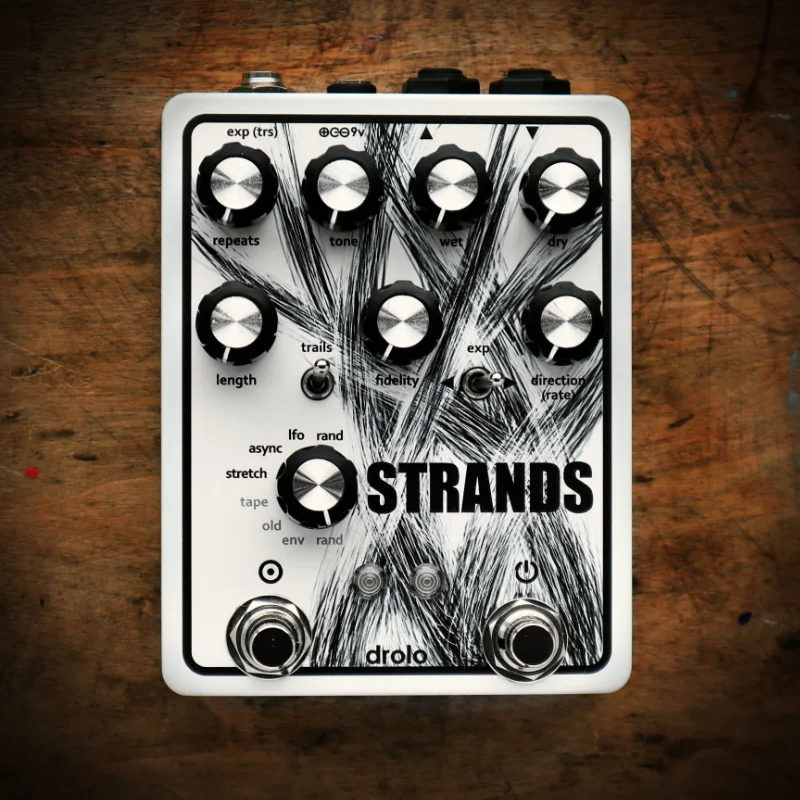
STRANDS
Granular Delay
Strands is a delay/micro looper with two main operation modes, time stretch and tape looper, that come in 4 variations each.
It can be used like a delay pedal, loop short audio bits, create evolving rhythmic or melodic patterns…
The overall memory size, delay and looping time, can be adjusted with the fidelity knob. Turning it up will increase the audio quality, but reduce the memory size, and vice versa. The audio memory varies between a bit less than a second to a bit over 3 seconds. The fidelity knob will also have an effect on other aspects of sound processing, like filter ranges, response of time based elements like LFO’s, envelope detectors etc.
The left footswitch allows you to loop the current content of the buffer. As the looped audio is recirculating through the buffer, eventually it will start to degrade, after a few minutes. This too is dependent on the fidelity setting.
The time stretch modes
stretch
Audio can be time stretched, with the direction knob altering the amount of stretching and direction of playback. Maximum amount of stretching is at noon. From noon to right, samples will be played forwards, and from noon to left, backwards. The length knob sets the size of the grains that overlap with each other.
async
Same as stretch but the two buffers that are used to overlap each other when stretching time, have slightly different sizes, causing the content of both buffers to slowly drift out of sync. The length knob sets the size of the grains that overlap each other.
lfo
Same as stretch but the amount and direction of stretching varies continuously over its whole range, from backwards to forwards and back, at a rate set by the direction knob. The length knob sets the size of the grains that overlap each other.
random
Same as stretch but the amount and direction of stretching varies randomly over its whole range, at a rate set by the direction knob. The length knob sets the size of the grains that overlap each other.
The tape modes
tape
Records short loops that are played back at a speed and direction set by the direction knob.
From left to right, the settings are:
Reversed – double speed, an octave above
Reversed – a fifth above
Reversed – normal speed, unison
Reversed – half speed, an octave below
Forward – half speed, an octave below
Forward – normal speed, unison
Forward – a fifth above
Forward – double speed, an octave above
The length knob sets the size of the samples.
old
The direction knob sets the direction and speed of the playback, from reverse on the left to forward on the right. At noon the playback stops.
The length knob defines to amount of degradation of the playback that will get increasingly muffled and wobbly as you turn it up.
env
The direction knob sets the direction and speed of the playback, from reverse on the left to forward on the right. At noon the playback stops.
The playback speed will be influenced by the strength of the incoming audio signal. If the signal is below the threshold set by the length knob, the playback will come to a halt. If the signal is strong enough, playback will reach it’s normal speed.
random
The direction and speed of the playback will randomly jump to different settings, at a rate set by the direction knob.
The length knob sets the size of the samples.
Head over to the shop if you’d like to purchase one
